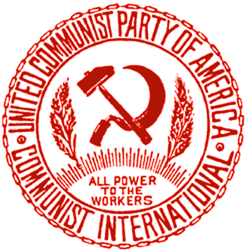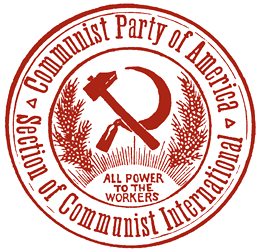ESTONIAN LANGUAGE FEDERATIONS history
ESTONIAN FEDERATIONS
The first major radical publication in the Estonian language in the United States was a weekly called Uus Ilm, which was founded in 1910 in New York.
Estonian Federation of the United Communist Party of America
There was an Estonian language group associated with the United Communist Party. Uus Ilm remained as a legal publication issued in association by this group.
In December 1920 there were 19 of the UCPs 673 primary party units ("Groups") that used the Estonian language, about 3% of the total.
[fn: DoJ/BoI Investigative Files, NARA M-1085, reel 940, doc. 501 — downloadable below.]
Estonian Federation of the unified Communist Party of America
There was a functioning Estonian Federation of the Communist Party of America by 1922, with “A. Weber”the National Secretary. “A. Reader" was National Organizer of the Federation.
Circa May 1922, a convention of the Estonian Federation elected the following as members of the Bureau of the Estonian Federation: “A. Weber”(Secretary); P. Kopp, W. Korn, A. Lambito, A. Malak, and N. Noges (probably all pseudonyms).
[fn. Comintern archive, f. 515, op. 1, d. 119, l. 57.]
Uus Ilm continued to be published weekly in New York. In 1925 it had a circulation of 550 and was edited by Alexander Kovel.
Downloads
1920
DECEMBER
“United Communist Party — “Groups" According to Language: As of December 1920.” This is based upon an internal document of the United Communist Party captured by the Department of Justice’s Bureau of Investigation in the April 1921 raid on UCP National Headquarters in New York. The UCP prided itself on having largely eliminated the federation-based form of organization which typified its rival, the Communist Party of America. Groups (Primary Party Units of between 5 and 10 members) were nevertheless based around language as well as geography and statistics tabulated by the organization. This snapshot from the midpoint of the UCP’s one year of existence surprisingly shows more South Slavic (Croatian and Slovenian) language groups than any other (144), followed by the Russian (136), English (121), German (61), Latvian (49), Yiddish (37), Lithuanian (34), and Finnish (31) language groups.
undetermined date
“Initiation Stamps Sold by Federation for the Workers Party of America. January to December 1923.” Official 1923 data set of the Workers Party of America, compiled from a document in the Comintern Archive. This series once again (repeating the previous published 1924 series) shows a schizophrenic pattern of stamp sales among language groups . Some federations clearly did not collect the initiation fees called for in the WPA constitution at all (Jewish, German, Latvian) while at the same time the quantities sold via the English branches are ridiculously high. Over 53% of the initiation stamps sold for the entire WPA were credited to the English branches — nearly three times as many initiations than there were average duespayers in those English branches! Even assuming a significantly higher than average “membership churn”rate for English branches, there is clearly some other unexplained phenomenon at play in these English branch initiation stamp sale figures...
undetermined date
“Membership Series by Language Federation for the Workers Party of America. ‘Dues Actually Paid’ — January to December 1924.” Official 1924 data set of the Workers Party of America, compiled from a document in the Comintern Archive. This shows a continued numerical dominance of the Workers Party of America by its Finnish-language federation, averaging a paid membership of 7100 (41% of the entire organization) for the year 1924. Impressive growth is shown by the Yiddish-language ("Jewish") federation, which moved to the third largest language group in the WPA in 1924. The English branches comprised the second largest language group in the WPA, but still remained just 11% of the overall organization. The South Slavic federation (predominately Slovenian and Croation) was the 4th largest language group in the WPA, topping the Russian, Lithuanian, and Ukrainian federations.
“Initiation Stamps Sold by Federation for the Workers Party of America. January to December 1924.” Official 1924 data set of the Workers Party of America, compiled from a document in the Comintern Archive. An extremely interesting monthly series in which two unexplained anomalies are apparent: (1) The failure of at least 8 of the WPA’s 18 language sections to make more than a token effort to collect the $1 initiation fee and obvious similar behavior (to lesser degree) among branches of other language groups; (2) A preposterously large sale of 5,264 initiation stamps to “English”branches, which averaged a paid membership of just 1909 over the course of the year. Either there was a revolving door in the English branches that was entirely dissimilar to the situation in any other language group of the WPA; or there was some sort of effort to collect initiation fees among “English”workers without organizational follow up; or there was some sort of strange accounting practice used by the WPA in which miscellaneous sales of initiation stamps were lumped into the “English”category (or some combination of these explanations). A perplexing question in raised, with further archival research clearly necessary.


